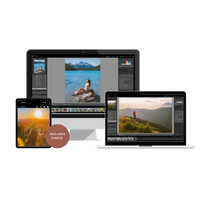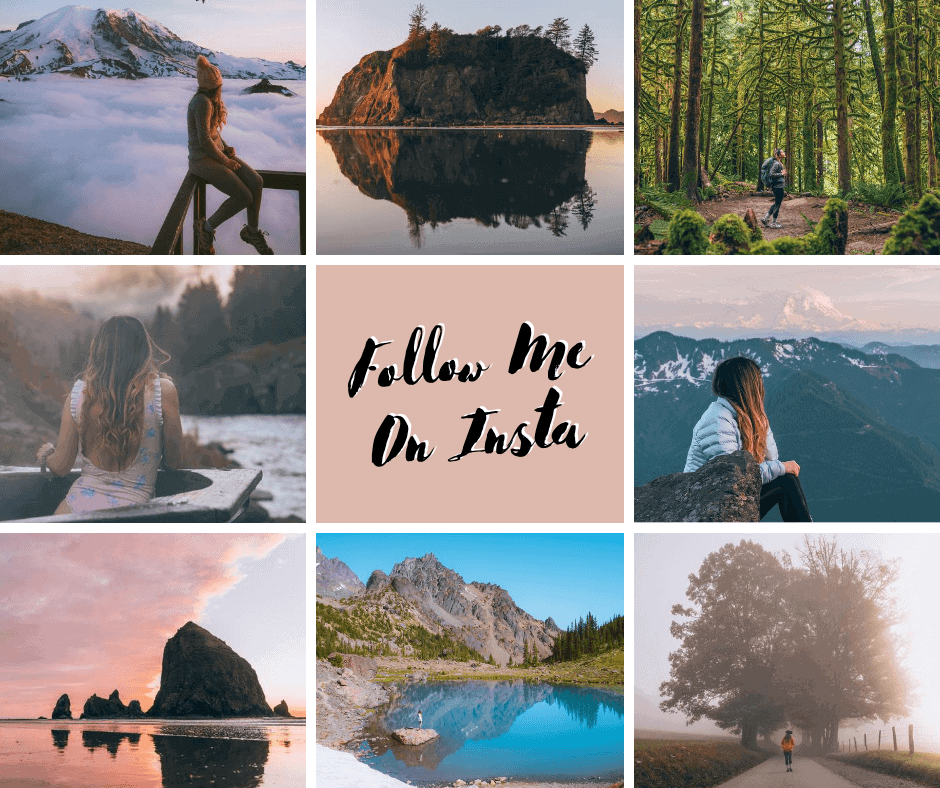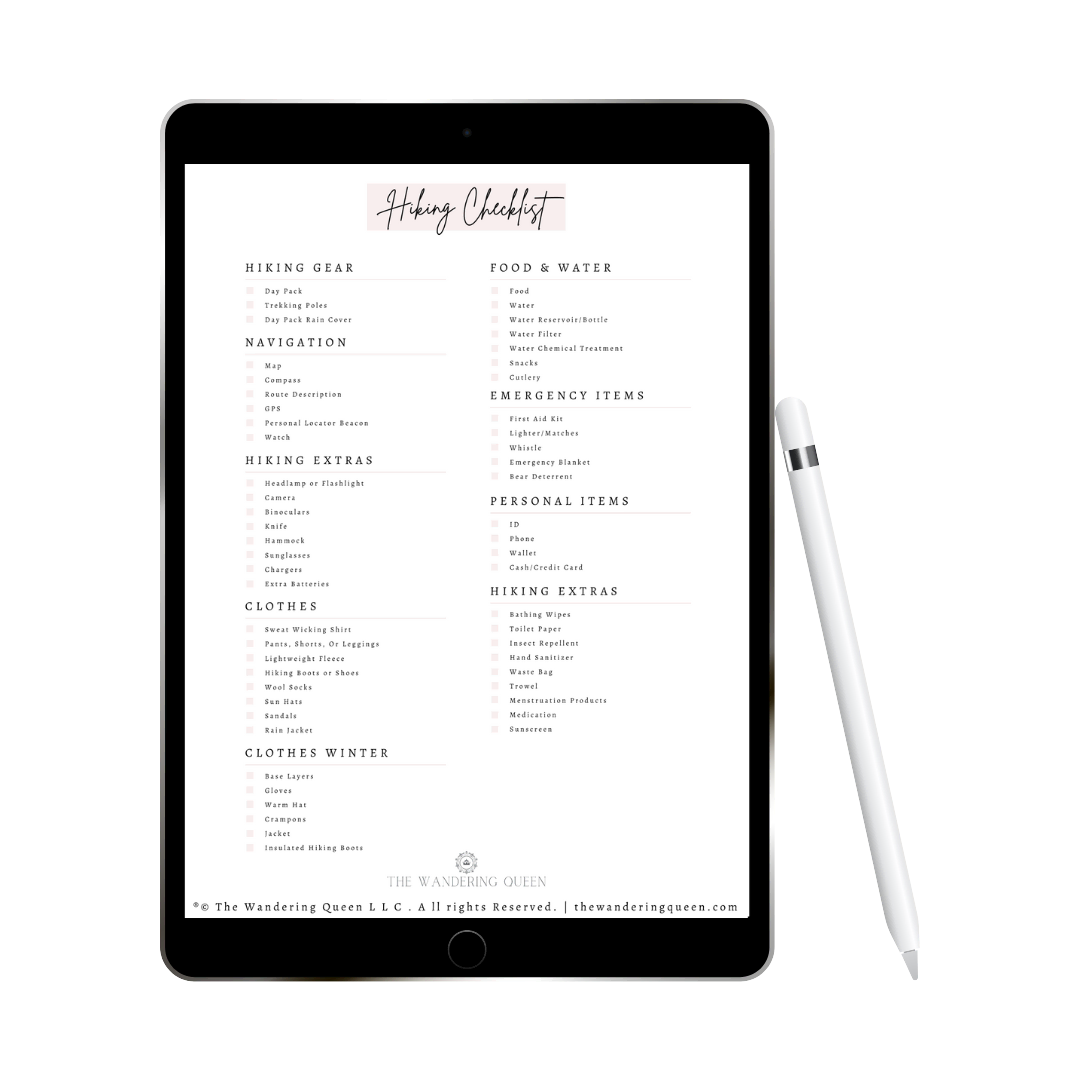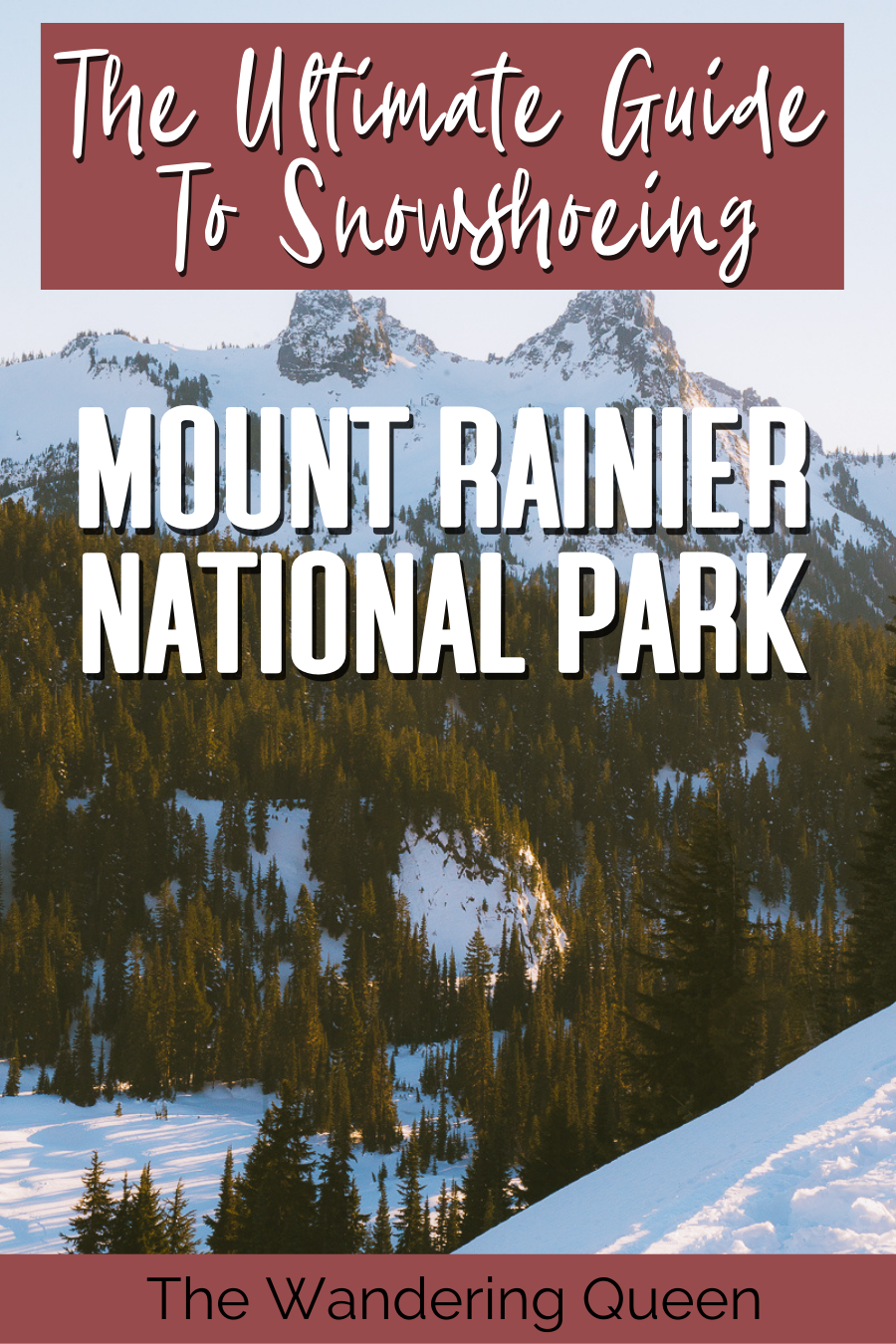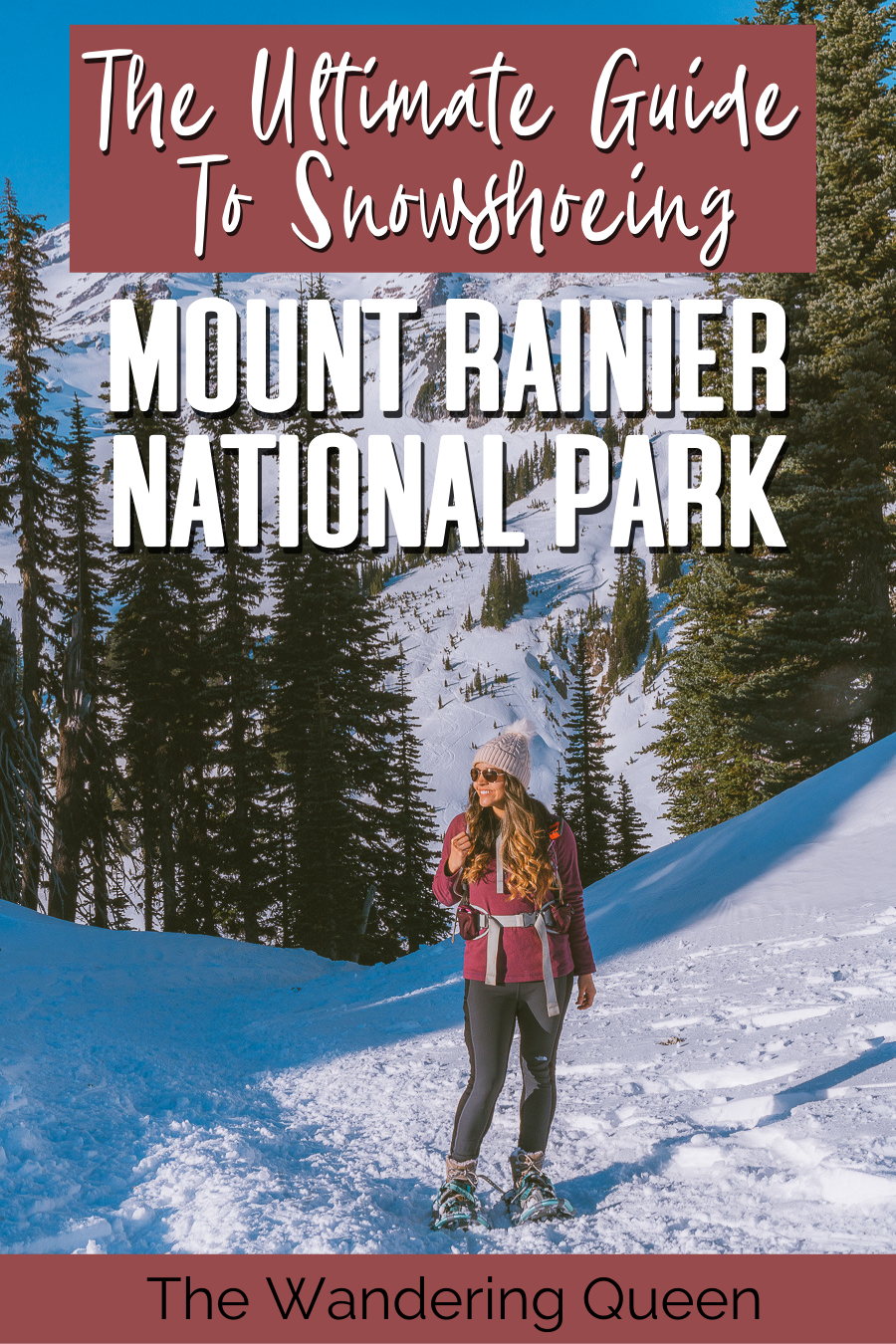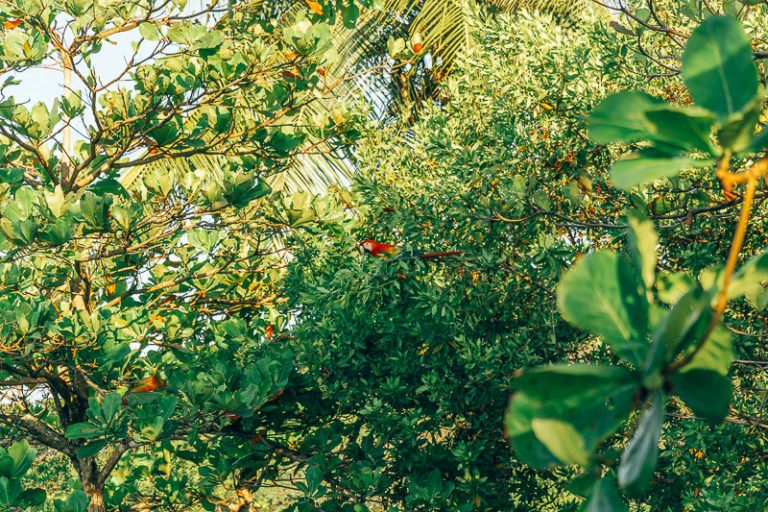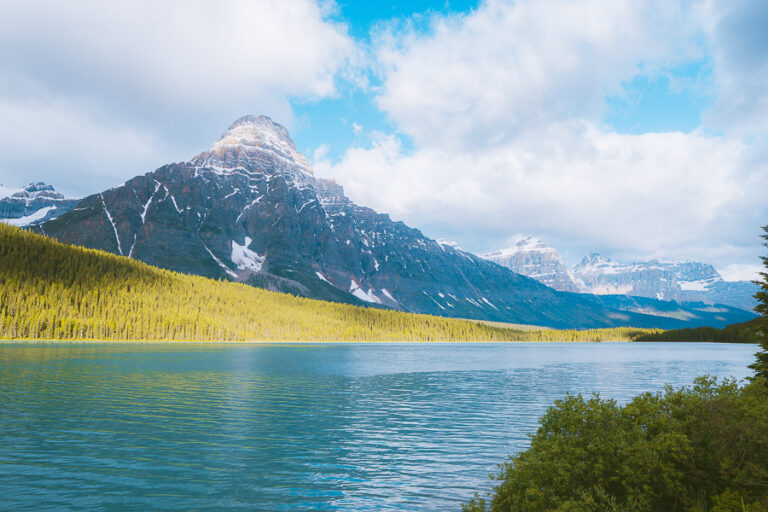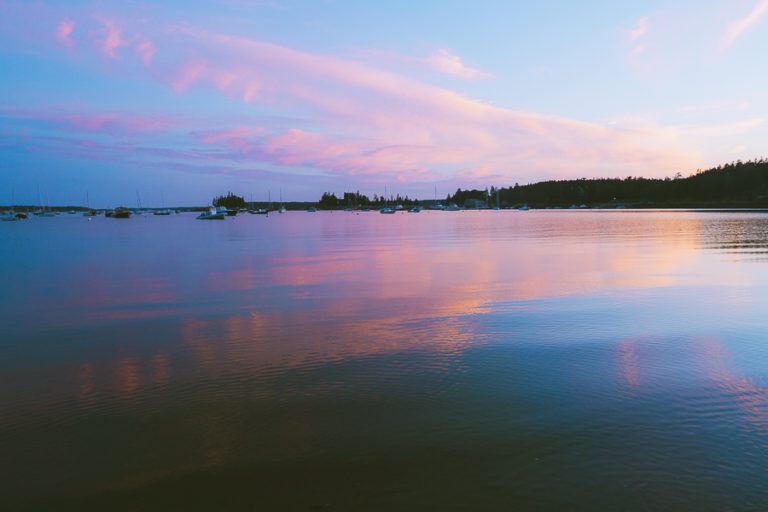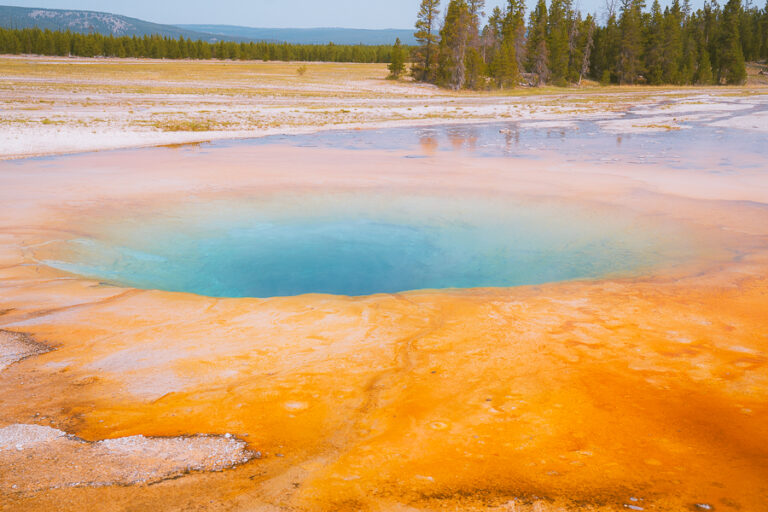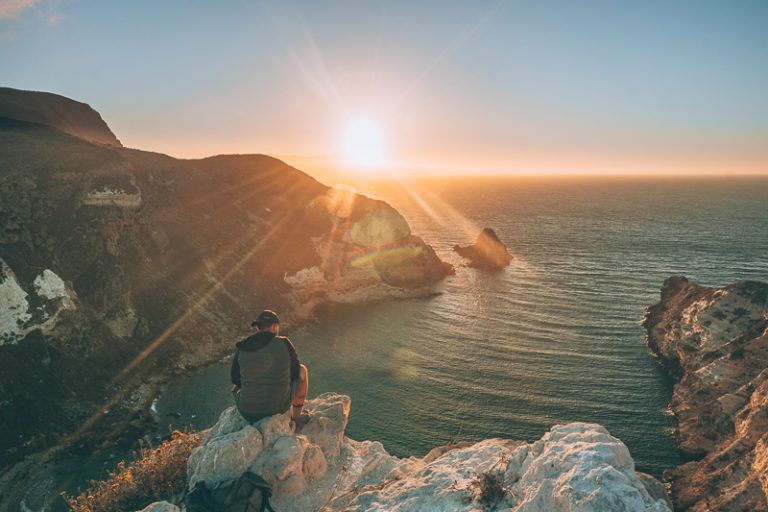The Ultimate Guide To Snowshoeing Mt Rainier National Park
It took me a while to try snowshoeing at Mt Rainier National Park. In the winter, I tend to stick to waterfalls or low-level trails with little snow. But I decided to try it out with a group of friends, and I was so glad I did! It was one of my favorite winter experiences in my life, and I love how breathtaking the views were and how helpful the rangers were. It indeed was such a great experience, and I hope more people can try out snowshoeing Mt Rainier National Park! The crowds are lower, and the views are still phenomenal. Check out below where I have helpful information on planning this fantastic trip.
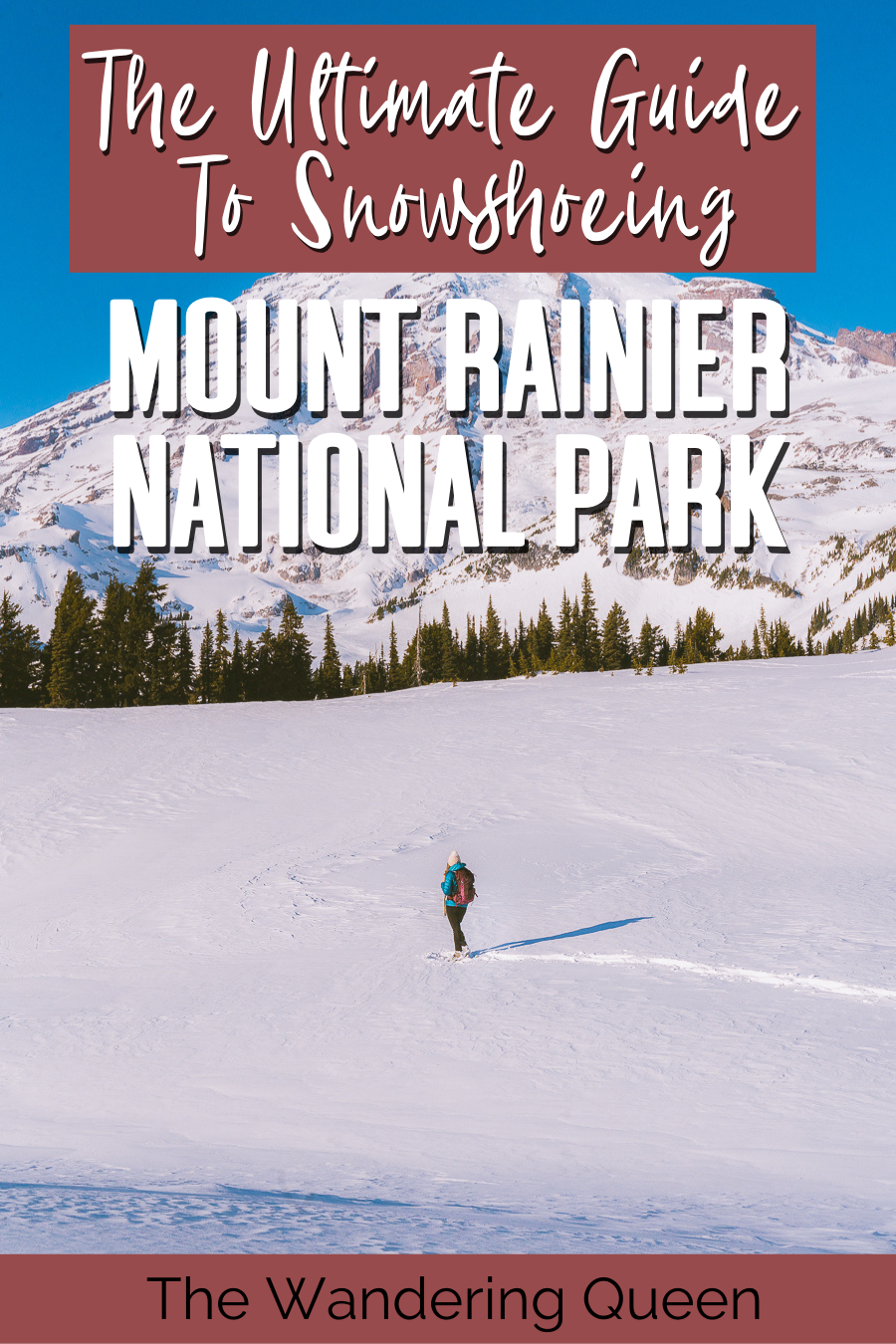
Disclosure: This post contains affiliate links. If you click one of them, I may receive a small commission (for which I am very grateful for) at no extra cost to you.
Download my free Outdoor Photography Guide
Mount Rainier National Park
Related Posts
Why Snowshoe At Mt. Rainier National Park
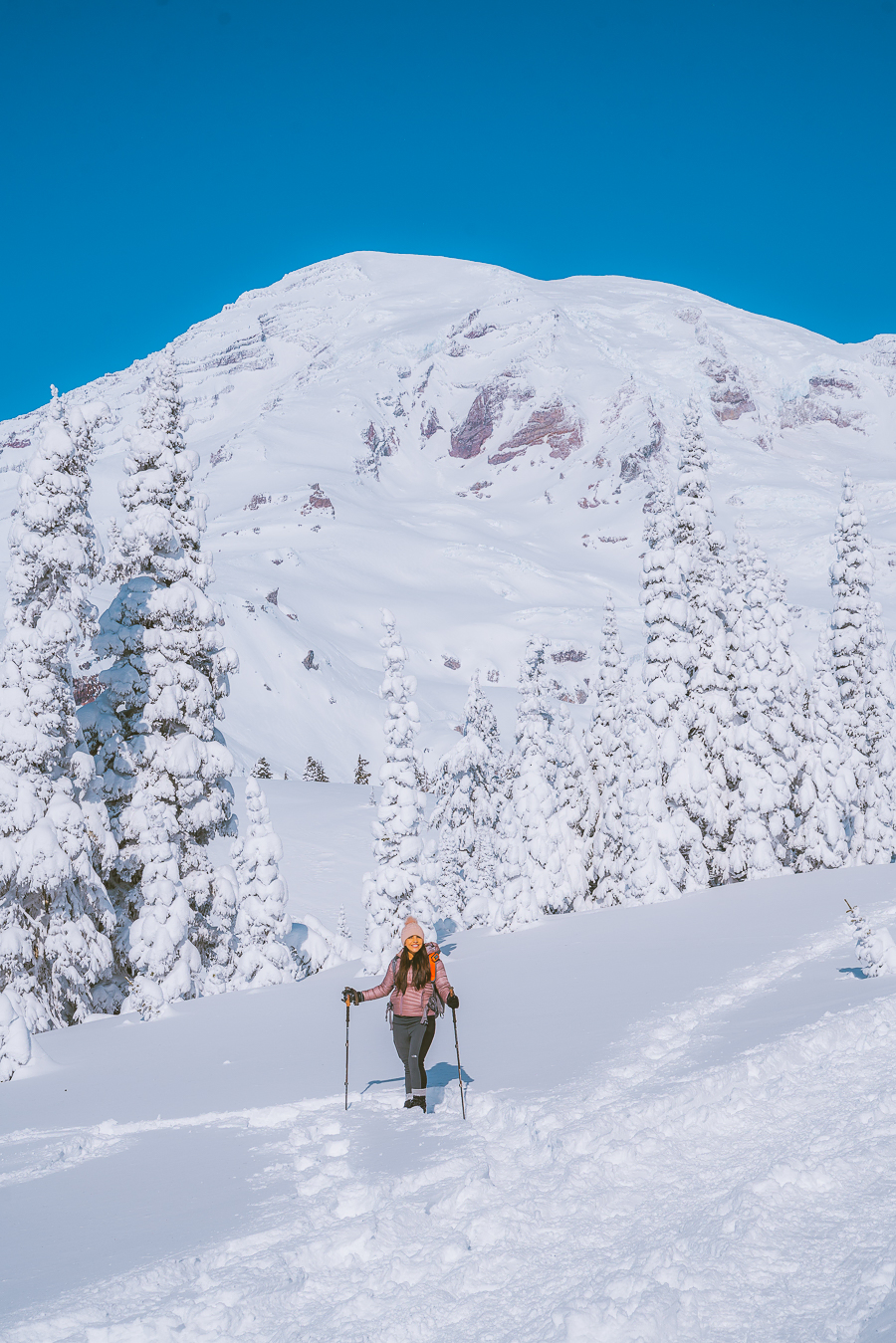
Mount Rainier National Park is one of the most breathtaking national parks in the country, and it holds some of the best trails in the state of Washington. If you see a weather forecast that is clear with no snow or clouds, then you need to go snowshoeing in the park! It is such a wonderful experience with the whole family. When I arrived at the Paradise Valley, I was astounded by how many families enjoyed and played in the snow.

Note: Longmire to Paradise is closed Mondays – Fridays for the 2022-23 winter.
Read More: The Ultimate Guide To Hiking In Snow
Where To Rent Snowshoes
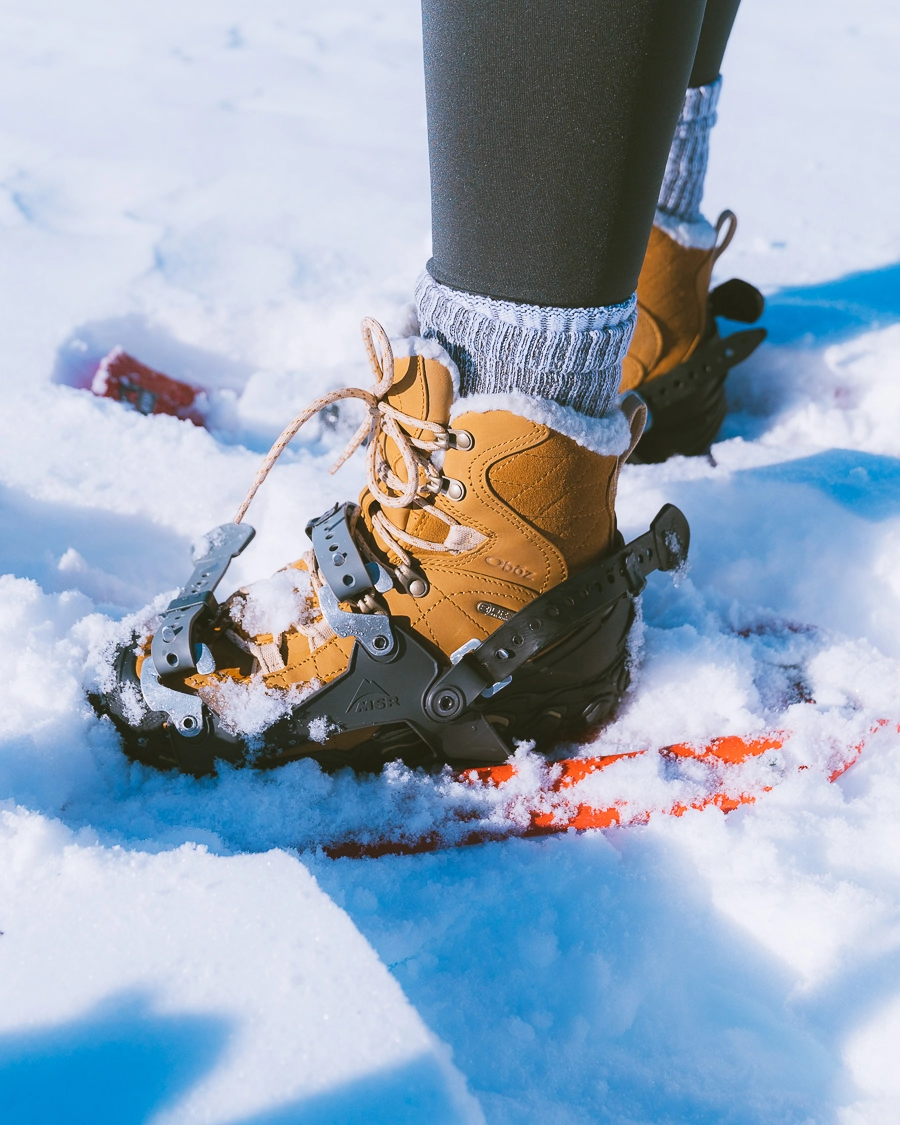
It is crucial to have snowshoes around Mount Rainier National Park in the winter. You sink into the snow every time you take a step if you don’t have snowshoes on. Snowshoes can be pretty expensive, and that is why many of my friends in Washington rent them.
You can rent snowshoes at many places around Washington State, and REI is probably best, especially because you can schedule when to pick it up online. You can also rent them at Whittaker Mountain. What is also great about renting from Whittaker Mountain is that they have hiking boots, hiking pants, and jackets to rent.
Read More: The Best Women’s Winter Hiking Boots
Mt Rainier Camping
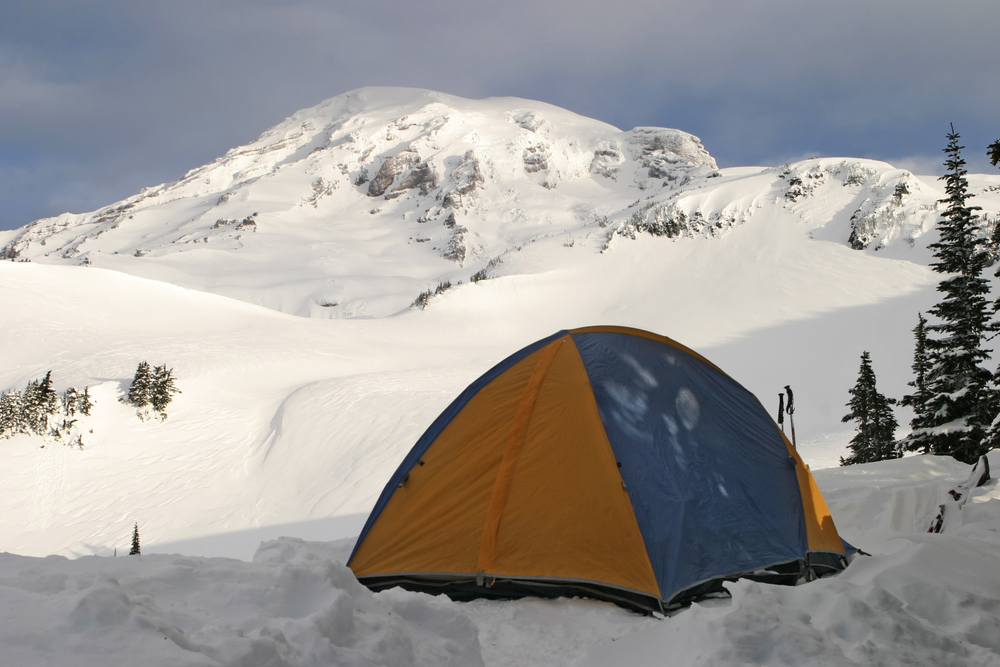
What is very remarkable about Mount Rainier National Park is that they allow backpacking in the park in the winter! Of course, getting a permit in the winter is much easier than in the summer, so this is a fantastic way to experience the beautiful national park overnight. The Paradise area requires at least five feet of snow to reserve, and Mazama Ridge, Reflection Lakes, and other areas require at least two feet of snow. You can only reserve in person. Read more about when winter camping in Mount Rainier is allowed here.
Read More: Beginners Guide To Winter Backpacking
Where Can You Snowshoe At Mount Rainier National Park
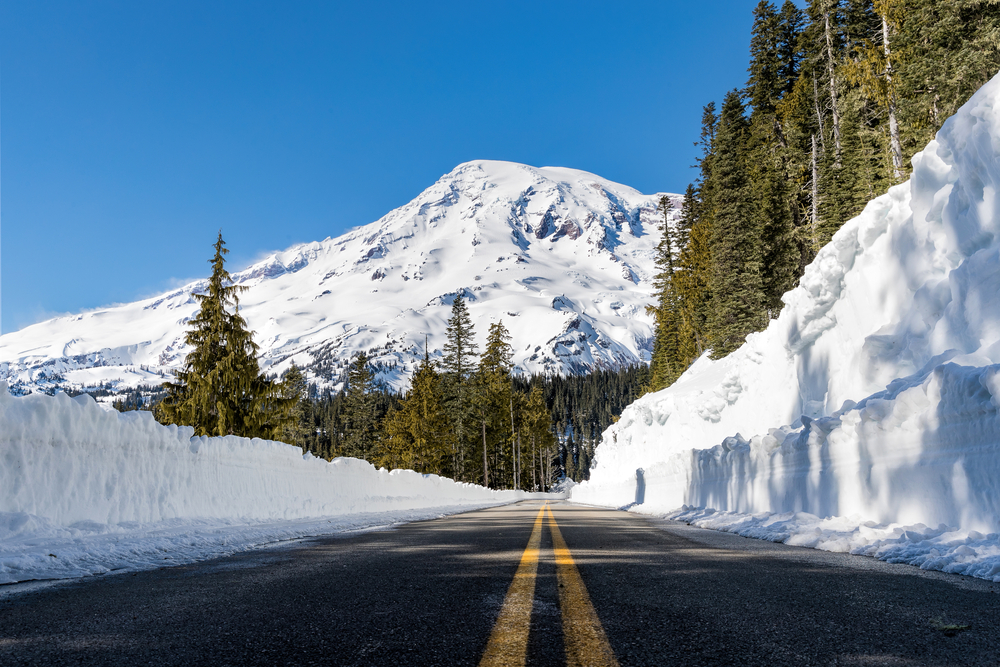
The only frequently plowed road in the winter is the Paradise Road that goes from Longmire to Paradise. You can check for road conditions here. You also need to have chains in your car regardless of what type of tires you have. The gate opens at 9:00 am and closes at 4:00 pm. Make sure you are out of the park before 4:00 pm! When navigating, put in Henry M. Jackson Visitor Center.
You can also go snowshoeing near Crystal Mountain, where most people go skiing or snowboarding. It is not a part of the national park, but there are still views of Mt. Rainier.
All the best views in the state
100+ WA Hikes
Embark on Washington’s best trails with our eBook! Inside, find top hikes, expert tips, and stunning views, making every adventure unforgettable. Dive into the beauty of Washington’s outdoors now!
When Can You Snowshoe Mt. Rainer National Park
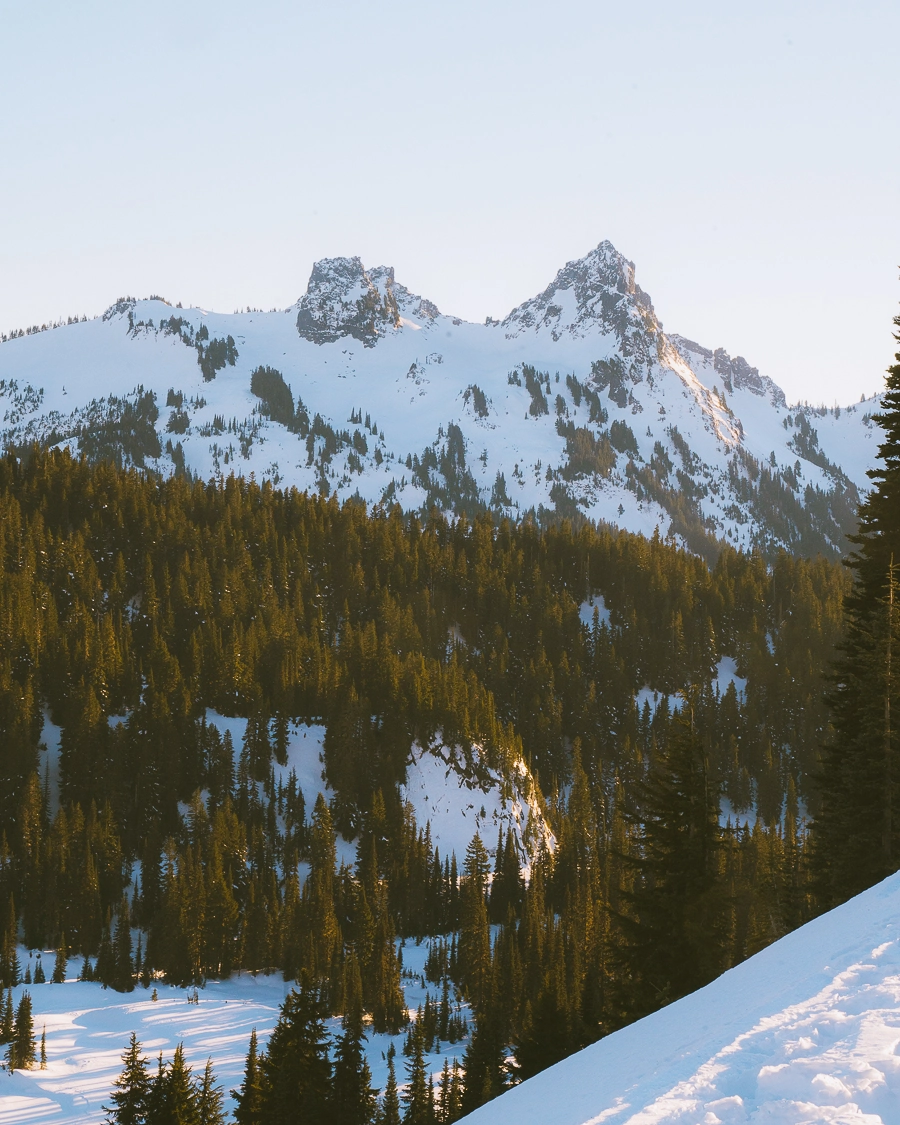
Snowshoeing is available in Mt. Rainier a lot longer than you would think! The Winters come early, and Spring runs long. You can probably start snowshoeing around November/October, and the snow will probably last until May/June. This past summer, the snow was still significant until the beginning of July! In June, many of my readers messaged me that they were not prepared for winter snowshoeing. They thought they were going to see green grass and wildflowers. Nope!
Map Of Snowshoe Trails
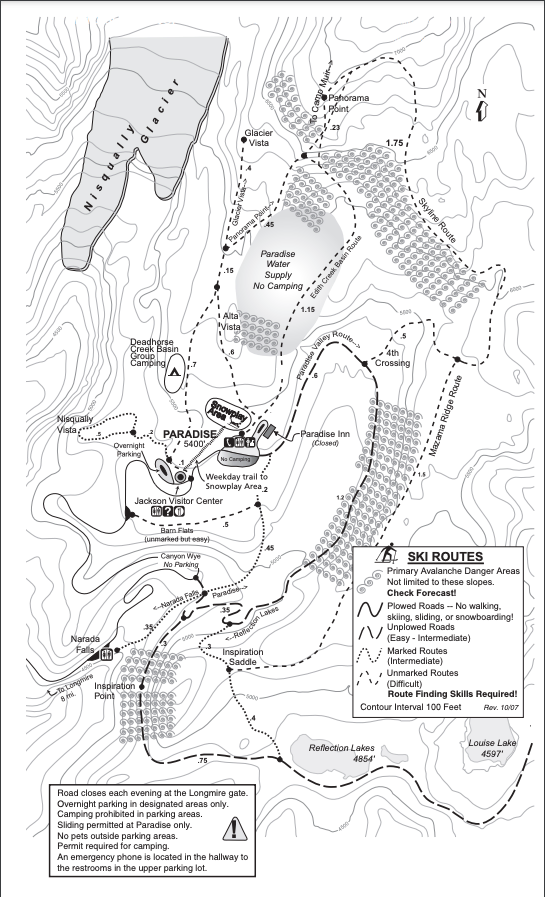
The map of the snowshoe trails is located above and through this link. I like this map because it also shows the avalanche danger zones. When hiking in the winter at Mt. Rainier National Park, I avoid these areas.
When you get to the park, I recommend talking to a ranger and asking them the safest routes to go. We did this when we snowshoed Mazama Ridge, and the ranger even gave us a very detailed map of the trail (we also downloaded an AllTrails Map).
Avalanche Danger When You Snowshoe Mt Rainier
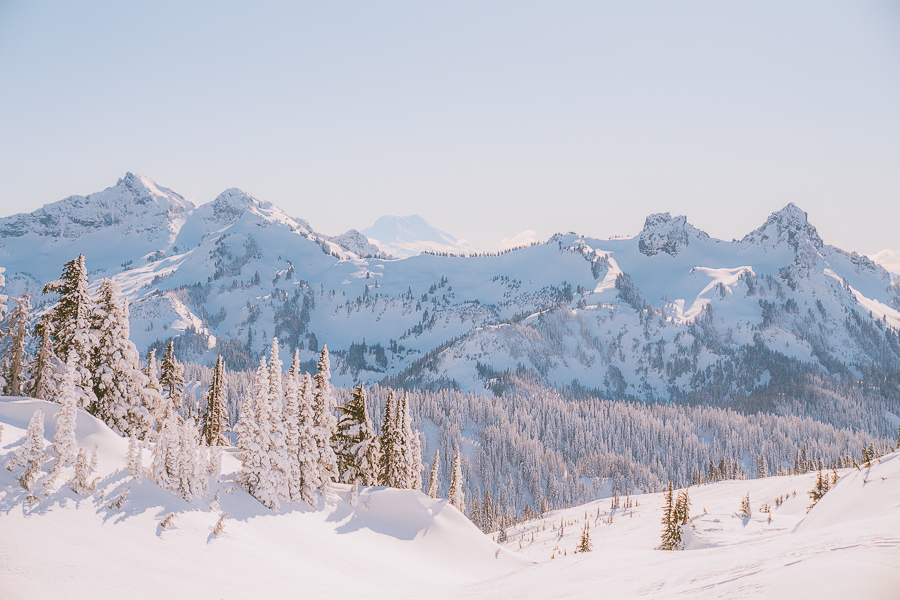
I can not stress how important it is to be aware of avalanche danger in the area, and that is why it is crucial to have a map that shows the areas prone to avalanches. You can also talk to a ranger before your hike about the concerns of avalanches, and I also recommend checking out this site on the risk of avalanches on the day you hike.
You can also take a ranger-led hike if you don’t even want to think about avalanches. It is a pretty safe and fun way to explore the park. Read more about it here.
Download my Washington Hiking Checklist!
What To Pack and What To Wear When Snowshoeing Mt Rainier
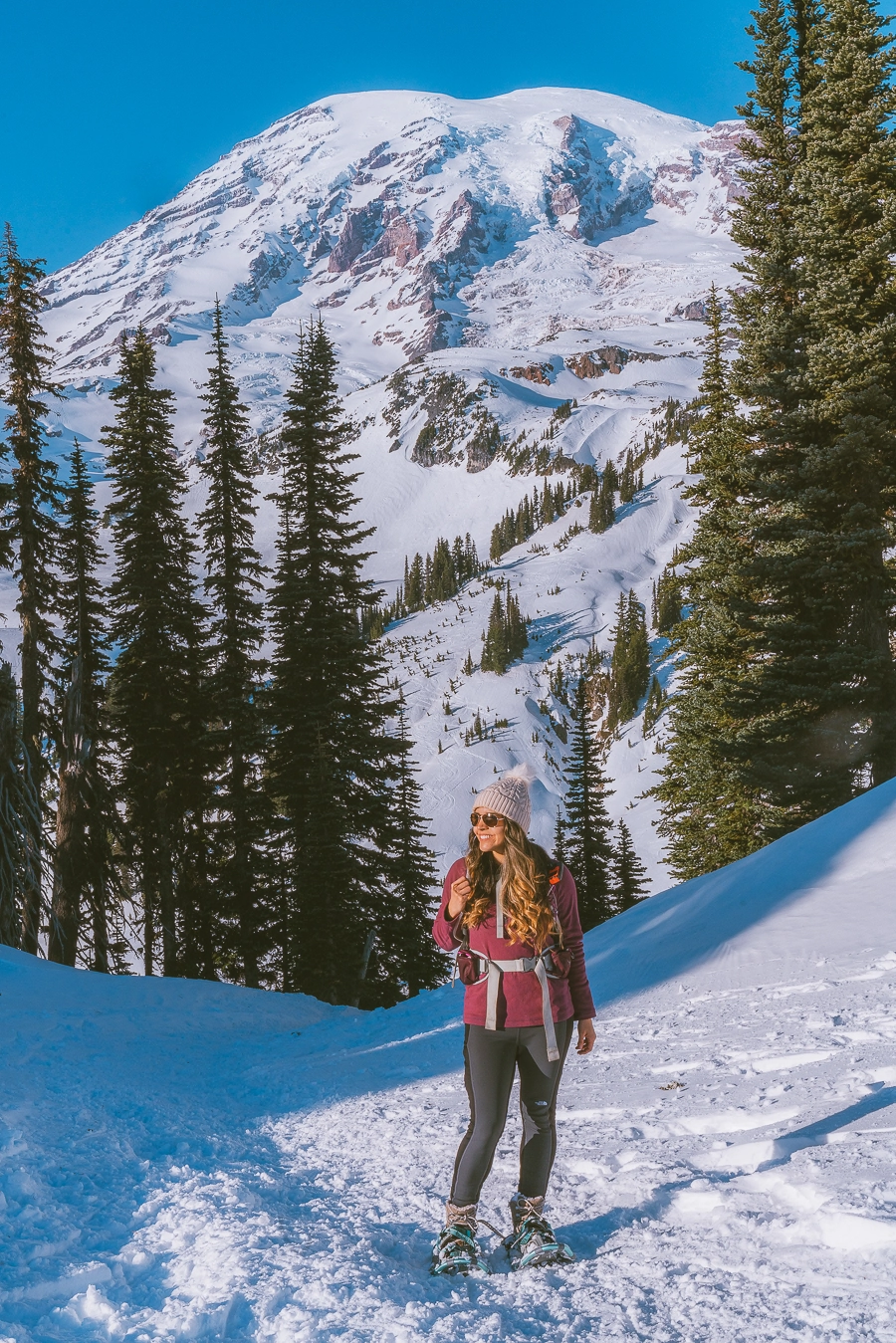
- Base Layers: Base layers are what go on the bottom of your snowshoeing outfit. Make sure it is breathable, as you don’t want to be soaked in sweat. Too much sweat can cause hypothermia. >Buy Bottom Layer >Buy Top Layer
- Sweat Wicking Shirt: A breathable long-sleeve shirt is good to wear on top of your base layers. >Check Out This Shirt
- Mid Layer: I love to wear a warm sweater under my jacket. >Check Out This Mid Layer
- Insulating Jacket: So important to have an extra warm jacket when snowshoeing. >Buy My Fav Jacket
- Outer Shell: Rain jackets are super important in the PNW. I especially love the Arc’teryx rain jackets. >Check Out My Fav Outer Jacket
- Wool Socks: Wool socks are important for keeping your toes nice and warm! I love these extra warm ones. >Buy Smartwool Socks Here
- Winter Hiking Boots: Good hiking boots are essential when hiking in the winter. Having boots that are insulated is very pleasant. >Get These Awesome Boots Here
- Hiking Gloves: My hands get so cold when I am hiking in the winter! Super important. >Get These Awesome Gloves Here
- Winter Hat: So important! A lot of your body heat leaves through your head. >Buy A Cute Beanie Here
- Buff: If the wind is pretty bad, a buff can help keep your face warm. >Check Out Buff Here
- Sunglasses: Even though it is winter, the sun can be out and bright. The reflection from the snow can be pretty blinding. >Check Out These Sunglasses
- Gaiters: This helps prevent snow from getting into your shoes/socks. >Buy Gaiters Here
- Crampons/Microspikes: You mainly need this when it is super icy. >Buy Crampons Here
- Trekking Poles: This will help with balance when snowshoing. >Check Out These Trekking Poles
- Winter Hiking Pants: Good hiking pants that repel water is good. But I sometimes wear leggings with fleece. It depends on what you like. >Buy These Winter Pants Here
- Backpack: This will carry all your food, water, and layers when hiking. >Click To See Backpack
- 10 Essentials: The ten essentials are something you need to keep in your backpack all year long when hiking. So important! >Read All About The 10 Essentials Here
Read More: What To Wear Snowshoeing
Mt Rainier Snowshoe Trails
Mazama Ridge
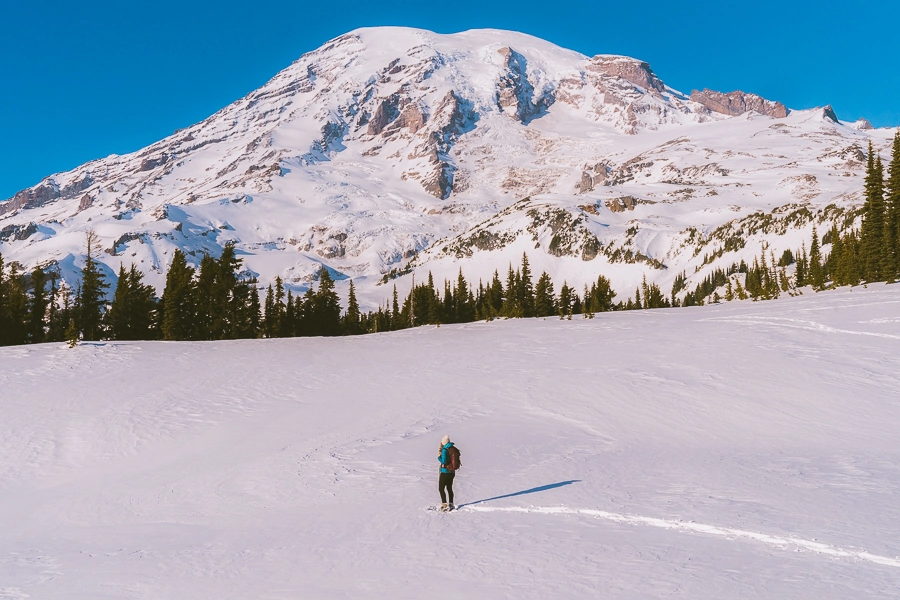
- Distance: 6 miles round trip
- Elevation Gain: 900 ft.
- Route Type: Out and Back
- Difficulty: Moderate
- Trail Guide: Link
I loved snowshoeing Mazama Ridge! It is such a fun and breathtaking trail. What I loved most about it was that the crowds were lower due to it not being near the Paradise area, and also the views were outstanding throughout the whole trail. You don’t need to hike the entire six miles. We ended up hiking up to the ridge, explored a bit, and then turned around. It is a beautiful trail, and I loved that it was intermediate and avoided the avalanche terrain.
Grab Your Free Car Camping Checklist! 🚗🌲
Ready to elevate your car camping game? Snag our essential checklist to ensure you’ve got everything you need for a stress-free, fun-filled adventure! Perfect for beginners and seasoned campers alike. Download now and hit the road prepared! 🌟🎒
Panorama Point Or Glacier Vista
- Distance: 5 miles round trip
- Elevation Gain: 1900 ft.
- Route Type: Loop
- Difficulty: Hard
- Trail Guide: Link
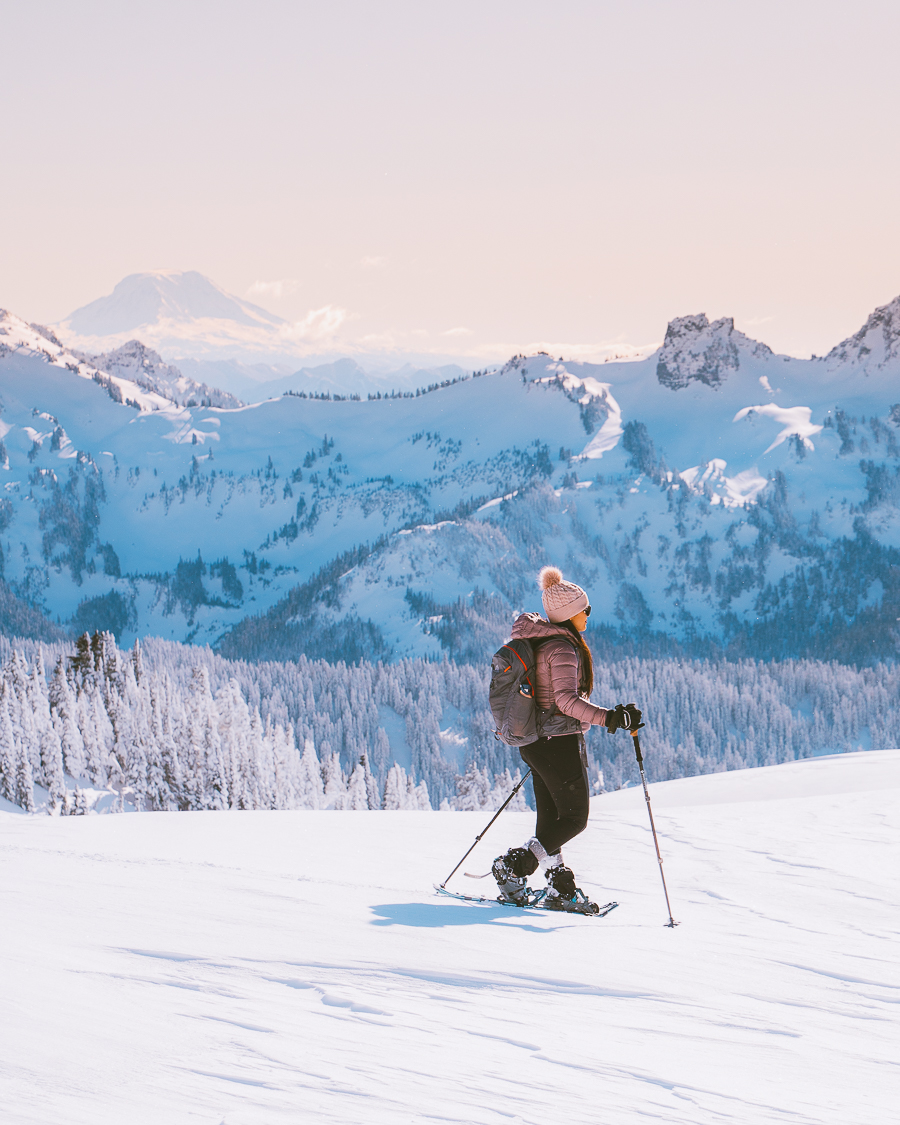
Panorama Point is the most popular hike in the national park all year round. It has fantastic views of Mount Rainier, and you don’t need to do the whole trail to feel happy about it, which is why it is so popular. In the summer, this trail is called Skyline Loop Trail.
Make sure you have a good map when you hike this trail. It is essential to avoid the avalanche areas, and in some portions, you are hiking right in between these areas. The path might be a bit different than the summer trail to avoid the avalanche areas, so talk to a ranger before attempting this trail. You can see a picture of the areas to avoid below.
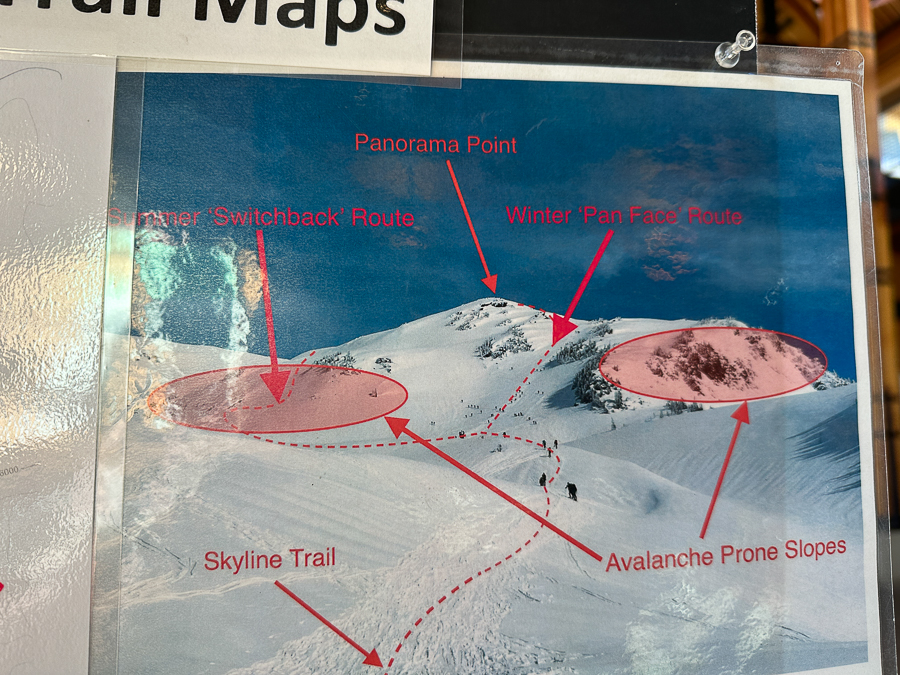
Panorama Point can be pretty difficult to get to, so if you get tired you can always hike to Glacier Vista instead. The elevation gain and mileage are a lot lower/easier. Once you get to the junction, you can make your decision on which viewpoint you want to see. If you feel like you are too tired go to Glacier Vista. If you have a lot more energy hit up Panorama Point.
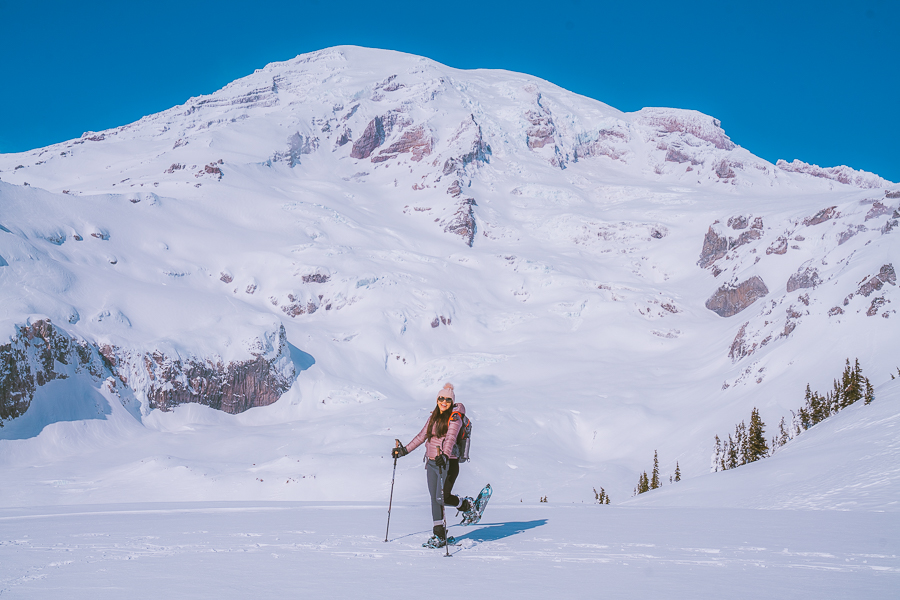
Nisqually Vista
- Distance: 1.1 miles round trip
- Elevation Gain: 200 ft.
- Route Type: Loop
- Difficulty: Easy
- Trail Guide: Link
Nisqually Vista is probably the most accessible trail on this list. What I like about it is that there is no avalanche danger whatsoever and that it is very short and easy. This is a great one for the whole family to hike, and afterward, you can all hang out by the snow play area.
Read More: 16 Best Things To Do in Mount Rainier National Park, Washington
Narada Falls To Reflection Lake Snowshoe
- Distance: 5 miles round trip
- Elevation Gain: 1150 ft.
- Route Type: Out And Back
- Difficulty: Moderate
- Trail Guide: Link
Narada Falls is one of the most breathtaking waterfalls in the national park! You need to check it out, especially when it is frozen over in the winter. This is still a great stop, even if you don’t want to snowshoe to reflection lakes. Park in the parking lot and make your way to the lakes. Do not forget to have a map on you.
Final Thoughts On Snowshoeing Mount Rainier
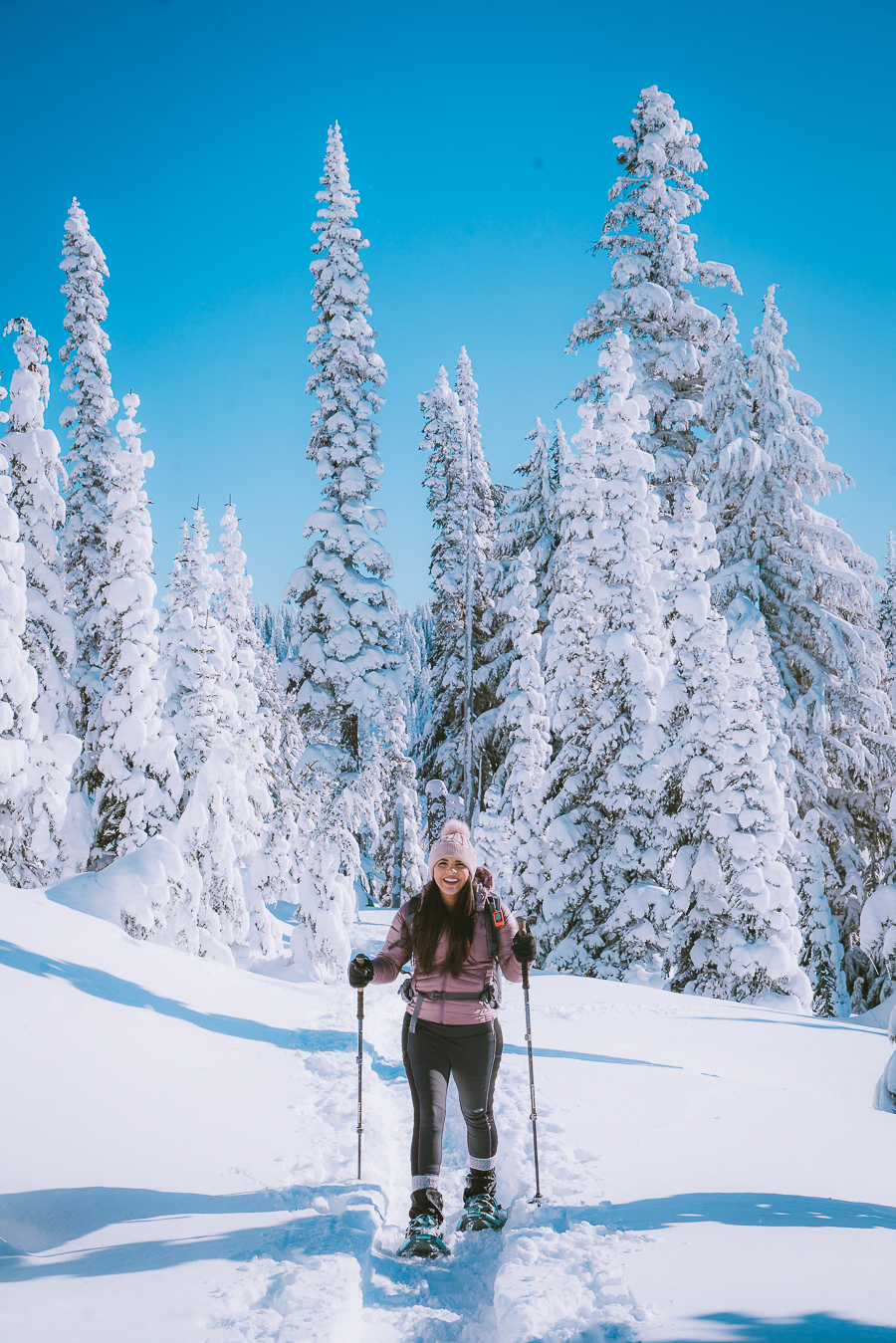
Thanks for reading the Mt Rainier National Park snowshoeing guide. Make sure to check out some of my other PNW blog posts:
- 22 Best Winter Hikes In Washington State
- 13 Stunning Idaho Hot Springs
- The Ultimate Pacific Northwest Road Trip Itinerary
- Fun Day Trip to Mount Rainier from Seattle

Claim your FREE Hiking Checklist
Ready to start hiking? Grab my free hiking checklist and never forget anything at home!
